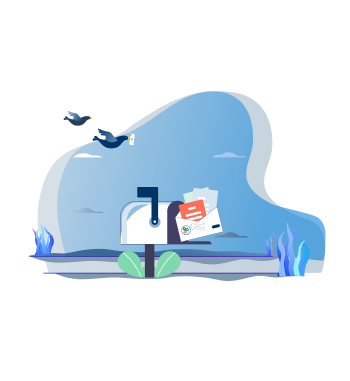Found this helpful? Share it with peers.
Introduction
Getting started with artificial intelligence (AI) can feel like navigating a maze without a map. Companies today are in a race to keep up with the rapid advances in technology. But with so many options and complexities, it’s hard to know where to start.
This is where capability-based planning comes in – a simple, yet powerful approach that can help you navigate the AI landscape. By aligning your goals with your capabilities, you can prioritize AI activities, make smarter investments and create tangible value for your organization. Let’s dive in and realize the full potential of AI together!
How Capability Maps Drive Your AI Strategy Forward
If you missed our previous discussion on business capability maps, be sure to catch up with “Business Capability Assessment with ADOIT”. It’s an essential read for understanding how to create a capability map and evaluate your organization’s strengths.
In a nutshell, you’ll compile a list of your company’s top 50-100 building blocks. These represent the ‘what’ of your organization, steering clear of implementation specifics. Then, for each capability, you’ll go to outline an investment strategy:
- Tolerate: This capability is accepted as it is. It does not need to be significantly changed or optimized. It is therefore not a candidate for AI projects.
- Invest: Investing in this capability is critical. Consider how you can increase both efficiency and effectiveness and leverage AI to support these efforts.
- Migrate: Transition this capability to adapt to newer business practices or technologies to ensure it continues to meet the organization’s needs. Again, consider how AI can help you do this.
- Eliminate: Discontinue this capability due to redundancy, obsolescence or lack of alignment with current and future business direction. This capability is naturally not a candidate for AI implementations.
Your capability assessment serves as the perfect foundation for the next phase: building your AI roadmap. The requirements you intend to realize through AI integration are the centre of this roadmap.
Building Your AI Roadmap in 5 Steps
The creation of roadmaps is a collaborative effort. Follow these steps together with your business and IT colleagues:
Step 1: Select relevant capabilities
Based on the earlier capability assessment, prioritize the capabilities for investment and migration.
Step 2: Define your AI-relevant requirements
There are usually business experts or even capability owners in the company for each of these capabilities. Identify and discuss ideas for AI support together with the AI experts and assign these ideas to the capabilities in the form of requirements.
The screenshot shows the strategic capabilities of a beverage manufacturer. Ideas for AI support were assigned to each capability.
Step 3: Prioritize your AI requirements
There are many different prioritization frameworks, such as Eisenhower prioritization or the RICE method. For our purposes, we use a simple Value x Impact method to prioritize our requirements. In general, it works as follows:
- Define value and effort criteria: Firstly, you should establish criteria for what constitutes “value” and “effort”. Value could include factors such as potential revenue increase, cost savings, customer satisfaction improvement, or strategic alignment. Effort might encompass development time, costs, technical complexity, and resource availability.
- Compare your requirements with each other and assess the value and effort involved by assigning scores. This is best done in a workshop together with your peers.
Requirements are compared with each other in workshops. Each requirement is assessed according to its value and effort.
After successful prioritization, a course of action can be defined for each requirement:
- High Value, Low Effort = Quick win: Requirements that deliver significant benefits with relatively little investment.
- High Value, High Effort = Big projects: Requirements that may offer substantial rewards but require significant resources and time. These might be scheduled based on resource availability and strategic importance.
- Low Value, Low Effort = Fill-ins: These requirements are easy to accomplish but don’t offer substantial benefits. They might be done if they support other higher-value requirements, or if spare capacity is available.
- Low Value, High Effort = Time wasters: These are typically avoided as they consume resources without providing proportional benefits.
Of course, you may first need to get a feel for the perceived value or efforts. In these cases, you can take a more in-depth approach to your analysis:
- To better understand the value for your stakeholders, you can get help from our Experience Design Use Cases.
- If you want to better understand the effort involved, you should first look at the underlying AS-IS Operating Model of the capability in question. It’s essential to understand the inner workings of the capability and what is already in place today: data, applications, interfaces, etc.
Step 4: Plan your requirements
Now, it’s time to schedule your requirements. You can use a straightforward Kanban board for this task. Collaborate with your colleagues to set deadlines for implementing each requirement.
The requirements are scheduled for implementation.
Usually, AI-based requirements aren’t the only ones you’ll have. You’ll likely have other requirements identified for your capabilities too. You have two choices: Allocate a specific budget for your AI-based requirements and manage them separately in a dedicated roadmap, or create a combined roadmap that includes both your strategic requirements and AI needs.
Step 5: Track your AI-based requirements
In the final step, keep a close eye on implementation progress and ensure regular updates for all stakeholders.
The progress of the requirements is actively monitored.
Summary
In the dynamic arena of AI, strategic planning goes beyond simple execution. Through capability-based planning, organizations synchronize AI strategies with core strengths and objectives, guaranteeing tangible value and competitive edge. By prioritizing investments and shaping AI roadmaps grounded in capability assessments, businesses can indeed achieve substantial impact.
With the help of capability maps, organizations can jointly develop AI roadmaps, melding business and IT expertise. Thoughtful assessment and prioritization of AI requirements ensure investments yield real results, fostering adaptability and resilience. This method facilitates informed decision-making amidst evolving challenges, propelling organizations ahead in the ever-shifting AI landscape.
As AI advances, dedication to capability-driven strategies remains important, steering organizations through technological transformations. Embracing this approach not only unleashes AI’s transformative potential but also fosters innovation and adaptability. Take the opportunity to explore this avenue for yourself and seize the benefits of AI firsthand!









